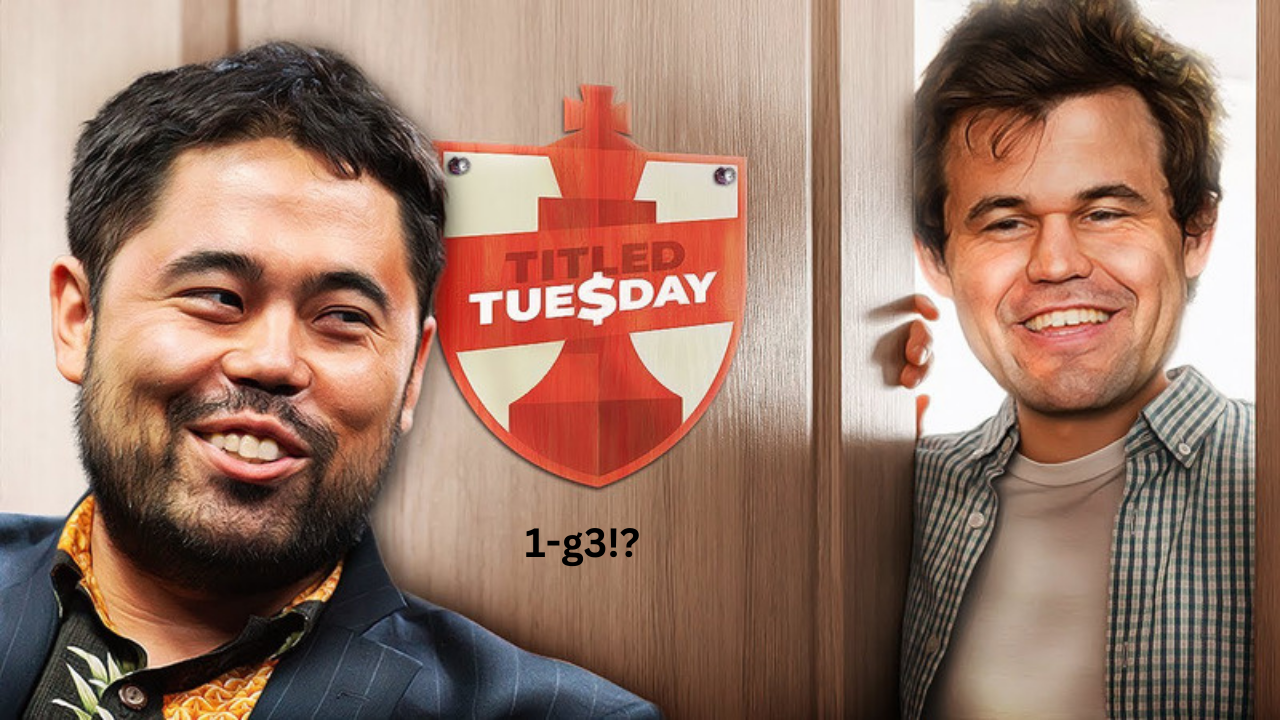Unraveling the Popularity of 1. g3 and the King’s Indian Attack in High-Level Chess

Introduction:
Chess, the timeless game of strategy and intellect, has seen an ever-evolving landscape of openings and tactics. Among the myriad choices available to players, one particular opening has stood the test of time and gained significant popularity at the highest echelons of the chess world: the King’s Indian Attack (KIA), often initiated by 1. g3. This article delves into the strategic intricacies of Tuesday’s favorite – the KIA – and explores why it has become a go-to choice for many grandmasters.
The Tuesday Opening – 1. g3:
In The Tited tuesday , Grandmaster Hikaru Nakamura found an opportunity to test the powerful chess move: 1. g3. This move, known as the King’s Fianchetto Opening, is a versatile choice for White. By fianchettoing the king’s bishop, White aims to control the long diagonal and prepare for a flexible development of the pieces. The move sets the stage for the King’s Indian Attack, a system that can catch opponents off guard due to its less conventional nature compared to more mainstream openings like 1. e4 or 1. d4.
The Kings Indian Attack (KIA):
The King’s Indian Attack, a system within the broader framework of 1. g3, is characterized by a pawn structure that resembles the King’s Indian Defense. However, instead of responding to Black’s moves, White dictates the pace, leading to a rich strategic battle. The key move that distinguishes the KIA is 2. Nf3, with the idea of consolidating White’s center and preparing for the upcoming middlegame.
Strategic Advantages of the King’s Indian Attack:
-
Flexibility and Transpositions: One of the primary reasons for the popularity of the KIA is its flexibility. By delaying the commitment to a specific pawn structure, White retains the option to transpose into various lines based on Black’s response. This adaptability can lead to a wide array of positions, keeping the opponent on their toes and disrupting their preparation.
-
Piece Activity and Development: The KIA places a strong emphasis on rapid piece development. By harmonizing the pieces and controlling the center, White aims to create a solid foundation for launching strategic and tactical offensives. The king’s bishop, fianchettoed to g2, exerts influence along the long diagonal, contributing to both attack and defense.
-
Pawn Structure and Center Control: The central pawn structure in the KIA often involves a pawn on d3, creating a solid foundation and maintaining pawn flexibility. The d3 pawn supports the central squares while allowing for subsequent pawn breaks like d4. This dynamic structure grants White a central presence, making it challenging for Black to establish a pawn majority.
-
Delayed Castling: The delayed commitment to castling is a hallmark of the KIA. By postponing kingside castling, White retains the option to choose between kingside and queenside castling based on the evolving position. This indecision can lead to confusion for Black, who must carefully consider their own pawn structure and piece activity before committing to a plan.
Grandmasters’ Preferences:
Several high-level players have incorporated the KIA into their repertoires with success. Grandmasters such as Anatoly Karpov, Bobby Fischer, and Garry Kasparov have showcased the potency of the KIA in various tournaments and world championship matches. Its adaptability, surprise factor, and strategic richness make it a favorite among those seeking to avoid heavily analyzed lines and steer the game into unique and complex positions.
Titled Tuesday example games :
Here are some example of games played by Hikaru nakamura : The following game transposed to a strange version of the english opening where hikaru outplayed his fellow grandmaster in the middle game and the endgame resulting into a blunder of a piece from black side under the pressure in a strategically lost endgame!
In the following game Hikaru nakamura , who is adopting this opening lately for the titled tuesday games destroyed his opponent in a very disrespectable way!.The endgame seems equal,However, after few moves it became totaly winning with a very very messy position where white is dominating the whole board with some careful play around his king!
And lastly we end with a Kings indian attack style of a game for white from the titled tuesday against no less than the super grandmaster Andreikin!
This game lead into a very messy endgame where white had the upper hand. Hikaru endup winning the queenside pawns and having an unstoppable outside passed pawn. Black was forced to resign!
Conclusion:
In the intricate world of chess openings, Tuesday’s choice of 1. g3 and the subsequent King’s Indian Attack has proven to be a formidable weapon for players seeking flexibility, surprise, and strategic depth. The KIA’s enduring popularity among grandmasters attests to its effectiveness in high-level play, where creativity and adaptability are essential ingredients for success. As chess enthusiasts explore the depths of this opening, Tuesday may well become synonymous with the cunning and dynamic spirit of the King’s Indian Attack.